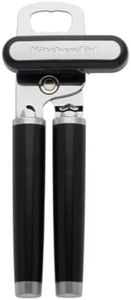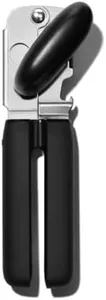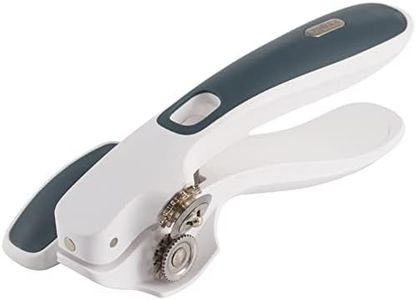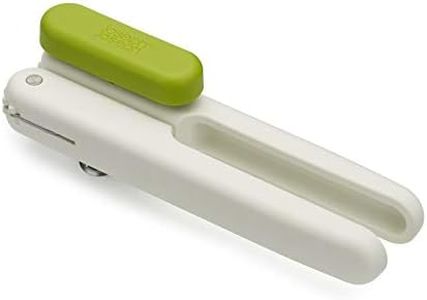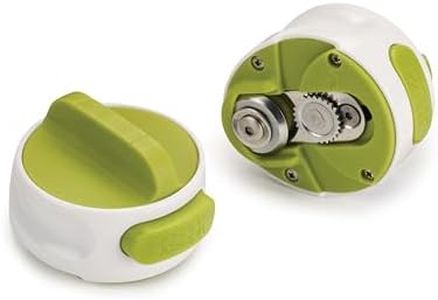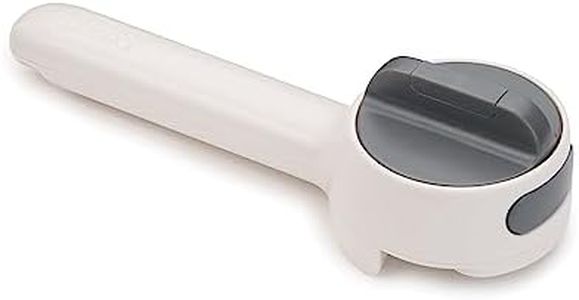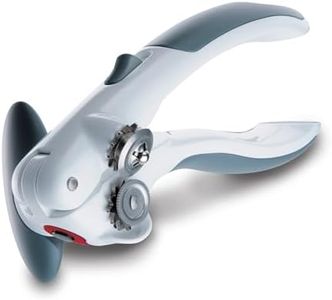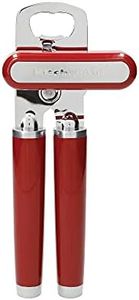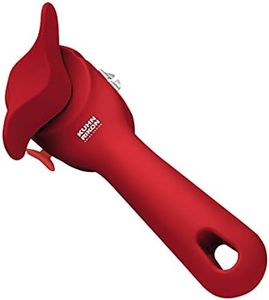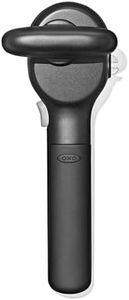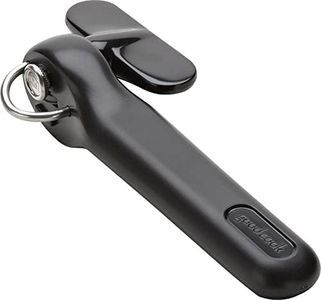We Use CookiesWe use cookies to enhance the security, performance,
functionality and for analytical and promotional activities. By continuing to browse this site you
are agreeing to our privacy policy
10 Best Manual Can Openers
From leading brands and best sellers available on the web.Buying Guide for the Best Manual Can Openers
Choosing the right manual can opener involves more than just picking up the first one you see on the shelf. Good manual can openers can make food prep easier and safer, while a poor one can be frustrating and even dangerous. Think about how often you open cans, your hand strength, storage space, and ease of cleaning. Considering these factors will help you find a can opener that is comfortable and reliable for your needs.Handle Comfort and GripThe handle comfort and grip refer to how easy and comfortable the can opener is to hold and use. This is especially important if you open many cans or have weaker hands. Handles may be made of plastic, rubber, or metal, with rubber or cushioned grips being softer and less likely to slip. Slim metal handles are compact but can dig into your hands with use. If you want a comfortable experience, especially for larger hands or long sessions, pick a model with padded handles; but if storage is crucial, thin handles may be preferred.
Cutting Mechanism QualityThe cutting mechanism is the part that actually opens the can, and its quality determines both the safety and smoothness of use. A sharp, rust-resistant blade is best for clean cuts and long life. There are two common types: traditional side-cut (which cuts into the top lid) and safety or smooth-edge (which cuts along the side for a smoother lid edge). Smooth-edge types are safer if you are concerned about sharp edges, while side-cut models are often more common and sometimes faster. Choose based on the importance you place on safety versus speed and familiarity.
Turning Mechanism and EffortThe turning mechanism is the knob or crank you rotate to operate the opener. Bigger and more ergonomic knobs are easier to turn, which matters if you have reduced hand strength or dexterity issues. Small, hard-to-grip knobs can make opening cans difficult. Think about your own hand comfort and whether multiple people in your household will be using it—opt for a larger, easy-to-turn mechanism if you want to minimize effort.
Ease of CleaningEase of cleaning relates to how simple it is to keep the can opener hygienic after use. Some models have removable cutting wheels or are dishwasher safe, while others require hand-washing. If you use your can opener frequently or want the least fuss, choose one designed for easy cleaning, especially if it can go in the dishwasher or is easy to rinse and wipe.
Durability and MaterialDurability and material refer to how long the can opener will last and how well it stands up to repeated use. Most manual can openers are made from stainless steel, which resists rust and keeps its sharpness. Plastic parts can wear or break more easily but are sometimes lighter. If you need a long-term and low-maintenance tool, prioritize all-metal construction and check for solid, sturdy joints.
Size and StorageSize and storage are about how much space the can opener will take up and where you plan to keep it. Some are compact enough for small drawers or even camping packs, while others have larger handles or broader turning knobs that require more space. Think about your kitchen storage and whether portability is important—and pick a size that matches.
